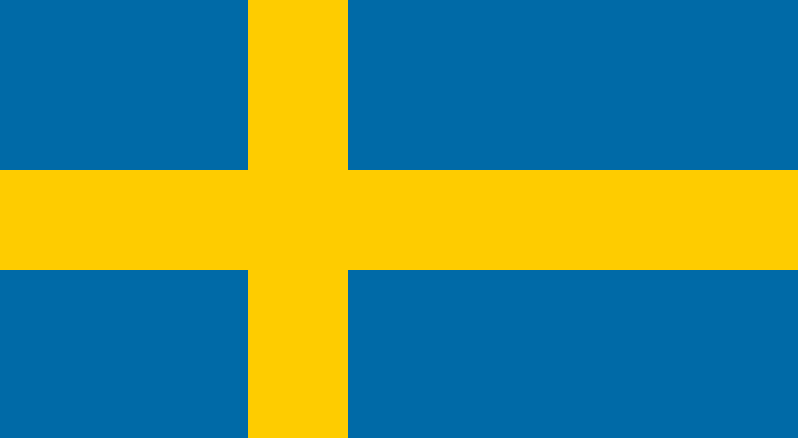When discussing racism or intolerance in the context of nations, chances are Sweden is not the first country that comes to mind. The country is consistently ranked amongst the happiest in the world, as well as the most gender equitable and accepting of homosexuality. Yet in a development reflective of the social disquiet growing across Europe, the recent wave of Swedish parliamentary elections saw the nationalist anti-immigration party, the Sweden Democrats, surge to a record-high 14 percent of the vote. The result provoked much anguish and soul-searching amongst Sweden’s political establishment and society at large — one eminent political scientist hailed it as “The End of Swedish Exceptionalism.” On the face of it, such rumours of Sweden’s demise seem greatly exaggerated — 14 percent is hardly a large proportion. Though it might seem like a measly and insignificant share, in Sweden’s political system it could be enough to grind the gears of government to a halt.
The Sweden Democrats did not spring out of nowhere, or even out of the 2008 financial crisis, as many commentators have alleged of far-right parties around Europe. In reality, the ascent of the Sweden Democrats — and, to a large extent, parties of the same ilk in other countries — began decades ago. If you were to plant a chronological flag in the date of the party’s inception, you could do worse than the late 1980s, when the Swedish neo-Nazi movement began. Twin forces of globalization and European integration sent immigration to unprecedented levels as the Iron Curtain came down and the world got smaller. While the 1990s saw much prosperity around Europe and the world, racial tensions in Northern European countries that observed this substantial influx of immigration began to simmer.
Sweden was no exception, and in many ways perfectly represents the two-faced nature of this development: one of the world’s most liberal immigration policies and highest refugee-per-capita numbers juxtaposed against the insidious expansion of groups bent on undoing those forces. The three decades since the Sweden Democrats’ beginnings as a fringe neo-Nazi group have seen it slowly come into the mainstream — out are the swastikas, in are dress codes and condemnations of racism.
Much of this polishing has been done by the Sweden Democrats’ leader, Jimmy Åkesson. His roots in the party go deep: He has been a member of the party since his teens, and has represented the party in electoral positions since becoming a councilman. Before taking a leave of absence after the recent election, he worked tirelessly for nearly ten years to soften the image of the Sweden Democrats and has led them to historic triumphs in successive general elections.
Young and photogenic at 35 years old, he is emblematic of the Sweden Democrats’ profile as a novel political force, and one that has traded on the perception of the political establishment as decrepit and inept. He also represents the moderate sheen the party has taken on in recent years to appeal to broader swathes of the electorate — a sheen that covers the darker elements of the party.
To be sure, these darker elements are never too far from the surface — in the run up to the September elections, a county council candidate resigned after being pictured with a swastika wrapped around her arm. They exist outside the realm of the Sweden Democrats as well; acts of xenophobia and anti-Semitism have also been on the rise, as in the vandalism of Jewish-owned establishments. Several years previous racially charged shootings plagued the ethnically heterogeneous coastal city of Malmö.
It is these elements, as well as the toxic image the party has amongst the general public, that have left the Sweden Democrats out in the political cold even as they have surged in popularity. Since entering the Riksdag, or Sweden’s parliament, in 2010, the other main parties have shunned the Sweden Democrats, and have pledged to continue to do so even after far-right party’s electoral gains this year, and the parliamentary perks that come with it. In the aftermath of the election, the Sweden Democrats obtained a key deputy parliamentary speaker’s position, with all the non-Sweden Democrat members abstaining from voting rather than following protocol and granting that seat to the third-largest party, as is custom.
For all the political establishment’s desire to determinedly ignore the Sweden Democrats, such ostracization might not be possible. The electoral results have left the political balance on a knife’s edge. Sweden’s political establishment is made up of some six or seven parties, previously divided into two ideological realms. On the right are the Moderates, the Center Party and the Christian Democrats — the collective known as the Alliance, who previously made up a coalition government. On the left are the Social Democrats, the Greens and the Left Party. The cumulative vote shares of the two sides are separated by a mere few percentage points. The only party outside of these political constellations is the Sweden Democrats, granting them a possibly decisive role when it comes to passing legislation. The group of leftist parties won, in a matter of speaking, the election by accruing the most votes, but did not attain a majority. With only around 40 percent of the vote, they will likely struggle to pass legislation with any sort of effectiveness.
Their ability to govern will be tested very soon — by law the governing coalition must pass a budget by the end of December (unlike the United States, there is a zero-tolerance budgetary procrastination policy in Sweden). Failure to do so will automatically trigger new elections sometime early next year, throwing up all sorts of possibilities for further advances to be made by the Sweden Democrats. Such a result would spell dire news for the historically tolerant society that Sweden has built through hundreds of years, and drive a party that has built its foundations upon racist rhetoric closer to the heart of government.
